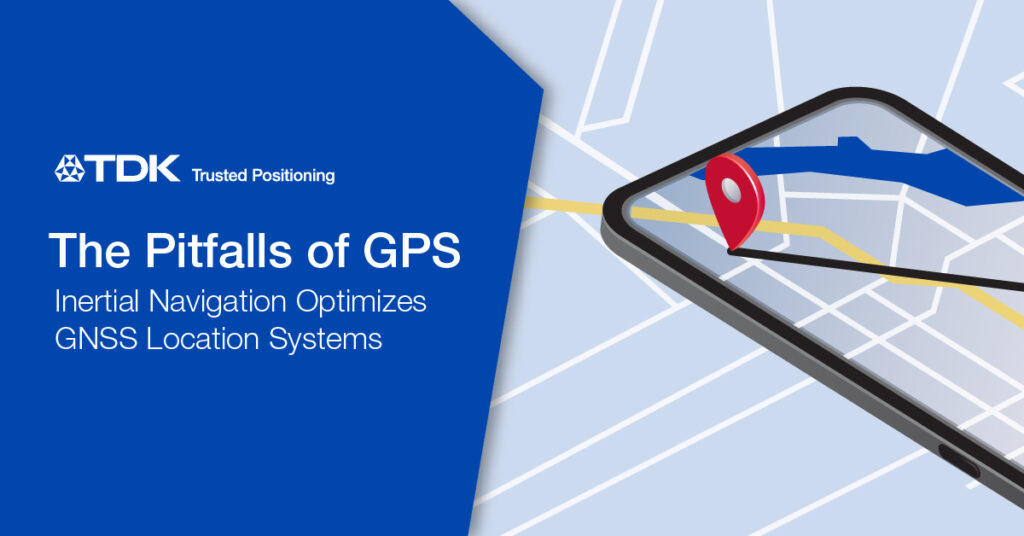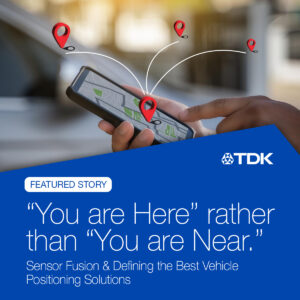Location technology is finding its way into more and more applications, including IoT and autonomous platforms. But global navigation satellite systems are not enough. They do not achieve the real-time requirement or the positional accuracy necessary for telematics and autonomous driving.
With the pure GNSS location system (Global Navigation Satellite System), there are a variety of pitfalls:
- A GNSS receiver cannot accurately determine the position of the user/device in areas where there is no direct line of sight to four or more satellites.
- GNSS is not available in covered areas such as tunnels and parking garages.
- In dense urban environments, GNSS signals from buildings are reflected and thus obscure the position of the user.
- In the construction, agriculture and mining industries, the satellite signal is often insufficient.
- It lacks the precision and accuracy required for mobile robots and delivery systems on the last kilometer.
Unnecessary accidents due to inaccurate positioning
The National Highway Traffic Safety Administration (NHTSA), the U.S. civil federal highway and vehicle safety agency, estimates that GNSS systems are responsible for more than 200,000 traffic accidents every year. Common causes of accidents include faulty navigation maps, incorrect locations, inaccurate directions and distracted driving. The place must also be correct in the emergency rescue.
When coordinating emergency vehicles, inaccurate location information can be life-threatening for ambulances, fire brigade or police. Although the exact position determination in the construction industry does not save lives in the first place, it is nevertheless of great importance: In this industry, inaccurate directions can, for example, lead to machines to deviate from the route. Frustrating rework is the result.
Inertial-based position determination with GNSS and MEMS
A pure GNSS location system is therefore not enough. The solution for improved vehicle positioning lies in the additional use of MEMS inertial sensors. Microelectromechanical systems (MEMS) have a small size and are inexpensive to manufacture. According to the name, a MEMS is a combination of mechanics and electronics in a confined space. In addition, MEMS offer maximum reliability and are thus increasingly used in the automotive industry. For example, MEMS inertial sensors are used for active and passive safety systems such as driving dynamics control, but also navigation systems.
The easiest way to show the function of a MEMS sensor is by the example of an accelerometer. An accelerometer has a comb-like microstructure surface, which is produced on a silicon structure using the processes common in the semiconductor egg.
In the middle there is a movable mass, which is held in the middle position with springy elements. The upper and lower elements are firmly connected to the sensor housing. The interlocking teeth of these combs form capacitors, which have a certain measurable capacity due to their size and the instantaneous distance.
Depending on the acceleration or deceleration, a force acts on the accelerometer, which directs the movable comb structure inside laterally. This changes the relative position of the comb teeth to each other. As a result, the distance of the capacitor surfaces and thus the capacity value also changes. About the change in capacities, conclusions can then be drawn about the force and thus the acceleration.
Since MEMS sensors are inexpensive to manufacture and allow particularly accurate positioning, they are preferably used for navigation systems. They enable accurate location determination in the most difficult environments, such as poor satellite reception, covered buildings or in the urban jungle. Measuring physical quantities correctly and forwarding them in electronic form – this has always been a special challenge. MEMS technology enables precise, robust and durable actuators and sensors. Another advantage is the component size, which is becoming smaller, more powerful and more cost-effective thanks to nanostructures and industrial mass production. It is not without reason that the MEMS division continues to grow.

Inertial navigation solutions from Canada
In cooperation with Trusted Positioning, a company of the TDK Group based in Canada that specializes in the development and distribution of position determination software, TDK has developed a navigation system based on this principle (Figure 1). The system called TRACK consists of an inertial core with accelerometers and gyroscopes. It continuously tracks the relative movement of the vehicle and uses GNSS information as absolute updates when it is available.
In tunnels, parking garages or other areas where the satellite signal is unreliable, or, for example, in inner cities, the inertial core filters out incorrect data and provides reliable position information – even without GNSS. The calibration and misalignment of the vehicle takes place automatically by typical driving movements without the need for factory calibrations.

GNSS and motion sensors (Inertial Measurement Unit, IMU) provide the required inputs for TRACK to work. Optional inputs, such as vehicle speed, pressure sensors and cards, can improve the accuracy of the solution. TRACK always delivers continuous 3D positions, 3D speeds, inclination/course and driving dynamics (Figure 2). One of the main areas of application of this technology is the automotive industry. Fleet tracking, navigation devices, telematics, vehicle AR/VR are just a few examples of use.
Trusted Positioning has been developing integrated positioning solutions for decades, which are already used in more than 50 million systems worldwide. The company’s innovation team consists of experts in inertial navigation, dynamic motion mechanics, geomagnetic positioning, GNSS, BLE, WLAN and other wireless positioning techniques. Trusted Positioning’s inertial navigation solutions allow high-precision positioning for markets such as autonomous vehicles, automotive infotainment/telematics, robotics, two-wheeled micromobility and indoor positioning.
You can find the original article featured on elektronicnet.de here.



